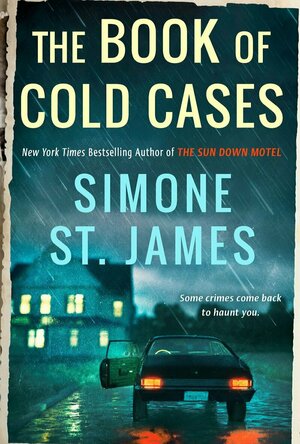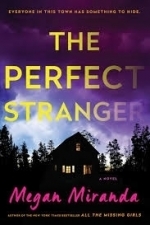Search
Gareth von Kallenbach (980 KP) rated As Above So Below (2014) in Movies
Aug 6, 2019
The film “As above so below” is part horror, part treasure adventure, and
all shaky cam. This found-footage film could also be more aptly titled as
“Lara Croft goes to hell.” The story centers around an excitable young
adventurer with a British accent named Scarlett on a search for the
mythological Philosopher’s Stone. A self-professed scholar of alchemy, she
hopes proving that the stone exists will fulfill her father’s legacy and
prove to the world that he wasn’t crazy. This search leads her and her
partners through the secret areas of the haunted catacombs of Pairs, France
into what could be hell itself. The movie starts with her traveling to Iran
for clues on the location of the Philosopher’s Stone.
The action opens without introductions which I enjoyed, as it gets right
into the action and sets the a good pace for the rest of the film. After
retrieving clues to the location of the stone and narrowly avoiding
security and a cave-in in Iran, our heroine sets off to Paris, France to
gather the rest of the crew for her adventure (the rest of our films
characters). These characters include her old friend Benji, a translator, a
group of French miscreants: Papillion (the leader), Zed and Souxie (the
Banshee, no kidding) all of whom are experts on the secret underground
catacombs. Her loyal documentarian George rounds out the crew who has
followed her around since the film’s opening shot.
Up until this point, the horror element of this film is non-existent. Once
the crew journey into the secret catacombs is when things begin to get
eerie. Plot and circumstance is good and all, but it’s a horror movie, is
it scary? Well, I wasn’t scared at all, neither was my wife whom I saw the
movie with. I’d call it more of a psychological thriller, a slight one at
that. Lots of supernatural happenings occur in the caverns akin to what
you’d find in a haunted house movie. Things like phone’s ringing
inexplicably in an area devoid of electricity and hundreds of feet below
the ground, spooky ghost like figures chanting occult hymns, and dead
drowned children. There isn’t much gore in this film, the little found is
reserved for the last 3rd of the movie. Some fear and wince inducing
moments are supplied via claustrophobia as the group squeezes themselves
through tight corridors and underwater channels. They did a pretty good job
of getting your heart racing. These scenes were reminiscent of a greater
horror entry “The Descent.” If you’ve seen that film, then you know what to
expect when it comes to the 1st person moments of claustrophobia.
Once in the catacombs what follows is a maze of twists and turns and
strange occurrences as the crew tries to solve the mystery of the hidden
Philosopher’s Stone as one by one the crew members get killed off in their
attempt to escape the demonic maze of underground tunnels. As for the
ending? Well prepare to be underwhelmed. The definitive worst part of the
film is its ending. It is so mundane and handled extremely poorly as to
come to an abrupt and seemingly rushed finish without any sense of
accomplishment or endearment to any of the characters or what they have
been through. Although they don’t all make it out alive (naturally this is
a horror film) those that do give off the impression of a group that has
just passed out of the end of a haunted house maze similar to those at the
upcoming Halloween Horror Nights at Universal Studios.
all shaky cam. This found-footage film could also be more aptly titled as
“Lara Croft goes to hell.” The story centers around an excitable young
adventurer with a British accent named Scarlett on a search for the
mythological Philosopher’s Stone. A self-professed scholar of alchemy, she
hopes proving that the stone exists will fulfill her father’s legacy and
prove to the world that he wasn’t crazy. This search leads her and her
partners through the secret areas of the haunted catacombs of Pairs, France
into what could be hell itself. The movie starts with her traveling to Iran
for clues on the location of the Philosopher’s Stone.
The action opens without introductions which I enjoyed, as it gets right
into the action and sets the a good pace for the rest of the film. After
retrieving clues to the location of the stone and narrowly avoiding
security and a cave-in in Iran, our heroine sets off to Paris, France to
gather the rest of the crew for her adventure (the rest of our films
characters). These characters include her old friend Benji, a translator, a
group of French miscreants: Papillion (the leader), Zed and Souxie (the
Banshee, no kidding) all of whom are experts on the secret underground
catacombs. Her loyal documentarian George rounds out the crew who has
followed her around since the film’s opening shot.
Up until this point, the horror element of this film is non-existent. Once
the crew journey into the secret catacombs is when things begin to get
eerie. Plot and circumstance is good and all, but it’s a horror movie, is
it scary? Well, I wasn’t scared at all, neither was my wife whom I saw the
movie with. I’d call it more of a psychological thriller, a slight one at
that. Lots of supernatural happenings occur in the caverns akin to what
you’d find in a haunted house movie. Things like phone’s ringing
inexplicably in an area devoid of electricity and hundreds of feet below
the ground, spooky ghost like figures chanting occult hymns, and dead
drowned children. There isn’t much gore in this film, the little found is
reserved for the last 3rd of the movie. Some fear and wince inducing
moments are supplied via claustrophobia as the group squeezes themselves
through tight corridors and underwater channels. They did a pretty good job
of getting your heart racing. These scenes were reminiscent of a greater
horror entry “The Descent.” If you’ve seen that film, then you know what to
expect when it comes to the 1st person moments of claustrophobia.
Once in the catacombs what follows is a maze of twists and turns and
strange occurrences as the crew tries to solve the mystery of the hidden
Philosopher’s Stone as one by one the crew members get killed off in their
attempt to escape the demonic maze of underground tunnels. As for the
ending? Well prepare to be underwhelmed. The definitive worst part of the
film is its ending. It is so mundane and handled extremely poorly as to
come to an abrupt and seemingly rushed finish without any sense of
accomplishment or endearment to any of the characters or what they have
been through. Although they don’t all make it out alive (naturally this is
a horror film) those that do give off the impression of a group that has
just passed out of the end of a haunted house maze similar to those at the
upcoming Halloween Horror Nights at Universal Studios.

Thinkrolls: Kings & Queens
Education and Games
App
Thinkrolls Kings & Queens is an epic adventure of logic, physics and fun! Practice reasoning, memory...

Bloons TD 4 HD
Games
App
Update News: new winter track & challenges, celebrating the release of Bloons TD 5 on iPad! We are...
Sarah (7800 KP) rated Rebecca (2020) in Movies
Nov 1, 2020
A dull adaptation
Rebecca is an adaptation of Daphne Du Maurier’s 1938 novel of the same name, following a young woman’s whirlwind romance and her battle to rid her new marriage and home of the shadow of her husband’s first wife.
Rebecca as a novel is a classic and a book I very much enjoyed, and whilst I’ve never seen the Hitchcock adaptation, it’s often referred to as a fairly legendary classic too. However I’m afraid to say the same cannot be said about this new version. The basic plot and story is present, although rather frustratingly the ending has been extended unnecessarily, but it has not been executed very well.
The trailer made this look quite sinister and spooky, which is quite right when the original novel is a gothic horror with aspects of a ghost story thrown in. However this film turns out to be nothing of the sort. It’s more of a romantic drama with a hint of thriller thrown in – the gothic horror ghost story is nowhere to be seen and neither is any form of intrigue or suspense. In fact I’d be so bold as to say this is just outright dull, and even the campy over the top sinister vibes from Kristin Scott Thomas’s housekeeper Mrs Danvers are laughable at best. The most interesting part of this was the opening scene with it’s sinister score but this just didn’t carry through to the rest of the film.
Sadly the cast don’t fare very well in this either. Lily James is a great actor, but her version of the new wife is too mousy and timid and you wonder what on earth Maxim ever sees in her. The character herself is very frustrating and irksome as she’s far too naïve and sweet. And Armie Hammer is miscast as Maxim De Winter himself. He looks the part, dashing and handsome, but he’s lacking in the intrigue, charm and secrecy that you’d expect this character to have. He’s also missing the age gap that is rather notable in the book.
The cinematography in this is rather concerning. The scenes in Monte Carlo are far too colourful and garish and they just look out of place, even more so for something that is meant to be a gothic horror. I’m unsure of why this has been done, other than to show a striking difference between Monte Carlo and Maxim’s Cornish home of Manderley. In fact what is most concerning about this film is why Ben Wheatley wanted to direct it. By far the biggest shock of this film was finding out Wheatley, of Kill List and Sightseers fame, had directed it. Wheatley is known for psychological dark (and often funny) thrillers and there is nothing of his style to be seen in this film at all. Which is a shame, as I think a little more of his dark style would’ve propelled this film into more than just a sub-par drama.
Overall this a very disappointing and long winded adaptation of a classic novel. Whilst there are a few decent scenes and a good, if not out of character, performance from Lily James, these are nowhere near enough to save this from being a bit of a bore.
Rebecca as a novel is a classic and a book I very much enjoyed, and whilst I’ve never seen the Hitchcock adaptation, it’s often referred to as a fairly legendary classic too. However I’m afraid to say the same cannot be said about this new version. The basic plot and story is present, although rather frustratingly the ending has been extended unnecessarily, but it has not been executed very well.
The trailer made this look quite sinister and spooky, which is quite right when the original novel is a gothic horror with aspects of a ghost story thrown in. However this film turns out to be nothing of the sort. It’s more of a romantic drama with a hint of thriller thrown in – the gothic horror ghost story is nowhere to be seen and neither is any form of intrigue or suspense. In fact I’d be so bold as to say this is just outright dull, and even the campy over the top sinister vibes from Kristin Scott Thomas’s housekeeper Mrs Danvers are laughable at best. The most interesting part of this was the opening scene with it’s sinister score but this just didn’t carry through to the rest of the film.
Sadly the cast don’t fare very well in this either. Lily James is a great actor, but her version of the new wife is too mousy and timid and you wonder what on earth Maxim ever sees in her. The character herself is very frustrating and irksome as she’s far too naïve and sweet. And Armie Hammer is miscast as Maxim De Winter himself. He looks the part, dashing and handsome, but he’s lacking in the intrigue, charm and secrecy that you’d expect this character to have. He’s also missing the age gap that is rather notable in the book.
The cinematography in this is rather concerning. The scenes in Monte Carlo are far too colourful and garish and they just look out of place, even more so for something that is meant to be a gothic horror. I’m unsure of why this has been done, other than to show a striking difference between Monte Carlo and Maxim’s Cornish home of Manderley. In fact what is most concerning about this film is why Ben Wheatley wanted to direct it. By far the biggest shock of this film was finding out Wheatley, of Kill List and Sightseers fame, had directed it. Wheatley is known for psychological dark (and often funny) thrillers and there is nothing of his style to be seen in this film at all. Which is a shame, as I think a little more of his dark style would’ve propelled this film into more than just a sub-par drama.
Overall this a very disappointing and long winded adaptation of a classic novel. Whilst there are a few decent scenes and a good, if not out of character, performance from Lily James, these are nowhere near enough to save this from being a bit of a bore.

Pixomatic photo editor
Photo & Video and Entertainment
App
“Desktop-quality image masking and editing tools. For extracting objects from images and...

Bloons TD 4
Games
App
Version 3.6 is now live featuring a brand new track and 2 new challenges. Update history: 3.5 -...
Heather Cranmer (2721 KP) rated The Book of Cold Cases in Books
May 5, 2022
I love a thriller that involves a chilling ghost story, so when I heard about The Book of Cold Cases by Simone St. James, I knew I had to read it. (Plus, I loved her other book The Broken Girls.) I was heavily immersed in this novel from the beginning!
I was sucked into the plot of The Book of Cold Cases right away. St. James gets right down to the nitty-gritty in the very first chapter. This book instantly grabs you and doesn't let go until the very last page. I was instantly transported to this small town in Oregon where I was right with the characters. As with her previous books, Simone St. James tells the story from more than one characters' point of view. We are told the story from Beth's, Shea's, and Lily's viewpoint. There was plenty of action and mystery to keep me intrigued throughout my reading journey. My favorite scenes in the book were the ones that involved the supernatural. I loved reading about how Greer mansion was haunted and about what supernatural activities were happening there. I also enjoyed the semi-big plot twist towards the middle of the book. However, I kept expecting an even bigger plot twist towards the end that never came which left me feeling a bit disappointed. However, this didn't really take away from the overall story that much. Something I could have done without was the romance in the book. It wasn't a major thing, but I just felt like there wasn't really a need for it. Other than that, I truly enjoyed this novel. Everything fit together really well (minus the romance), and the story was all tied together by the very end.
I felt that all the characters in The Book of Cold Cases were fleshed out enough to feel realistic whilst reading. I really liked Shea's interest in true crime since I can relate to that. I admired Shea's thirst for knowledge and how far she'd go to find out the truth of things she wanted to know. (I guess we both need closure!) I did feel like she got over her phobia a little too conveniently and quickly though. Beth was a wildcard for me throughout the book. I couldn't tell if she was guilty like many people believed or if she actually was a guilty party. I did like Beth though, and I loved her attitude she had when accused of murder. Lily was fabulously written, and I enjoyed reading about her too. I won't go into much more detail about her due to spoilers, but her part in The Book of Cold Cases was written well. The only character that kind of bothered me was Michael. I just felt like he was thrown in there as an easy way out. We're introduced to him from the beginning, and I kept waiting for some plot twist to happen involving him, but I was sadly disappointed. I just felt as if the book could have done without him.
Trigger warnings for The Book of Cold Cases include violence, murder, profanity, sexual abuse of a minor (not graphic), and kidnapping.
Overall, The Book of Cold Cases is a thrilling read with a fantastically chilling plot. With a spooky ghost story and an intriguing mystery, St. James has a real winner on her hands. I would definitely recommend The Book of Cold Cases by Simone St. James to those aged 17+ who love being scared and intrigued at the same time. You won't be disappointed.
I was sucked into the plot of The Book of Cold Cases right away. St. James gets right down to the nitty-gritty in the very first chapter. This book instantly grabs you and doesn't let go until the very last page. I was instantly transported to this small town in Oregon where I was right with the characters. As with her previous books, Simone St. James tells the story from more than one characters' point of view. We are told the story from Beth's, Shea's, and Lily's viewpoint. There was plenty of action and mystery to keep me intrigued throughout my reading journey. My favorite scenes in the book were the ones that involved the supernatural. I loved reading about how Greer mansion was haunted and about what supernatural activities were happening there. I also enjoyed the semi-big plot twist towards the middle of the book. However, I kept expecting an even bigger plot twist towards the end that never came which left me feeling a bit disappointed. However, this didn't really take away from the overall story that much. Something I could have done without was the romance in the book. It wasn't a major thing, but I just felt like there wasn't really a need for it. Other than that, I truly enjoyed this novel. Everything fit together really well (minus the romance), and the story was all tied together by the very end.
I felt that all the characters in The Book of Cold Cases were fleshed out enough to feel realistic whilst reading. I really liked Shea's interest in true crime since I can relate to that. I admired Shea's thirst for knowledge and how far she'd go to find out the truth of things she wanted to know. (I guess we both need closure!) I did feel like she got over her phobia a little too conveniently and quickly though. Beth was a wildcard for me throughout the book. I couldn't tell if she was guilty like many people believed or if she actually was a guilty party. I did like Beth though, and I loved her attitude she had when accused of murder. Lily was fabulously written, and I enjoyed reading about her too. I won't go into much more detail about her due to spoilers, but her part in The Book of Cold Cases was written well. The only character that kind of bothered me was Michael. I just felt like he was thrown in there as an easy way out. We're introduced to him from the beginning, and I kept waiting for some plot twist to happen involving him, but I was sadly disappointed. I just felt as if the book could have done without him.
Trigger warnings for The Book of Cold Cases include violence, murder, profanity, sexual abuse of a minor (not graphic), and kidnapping.
Overall, The Book of Cold Cases is a thrilling read with a fantastically chilling plot. With a spooky ghost story and an intriguing mystery, St. James has a real winner on her hands. I would definitely recommend The Book of Cold Cases by Simone St. James to those aged 17+ who love being scared and intrigued at the same time. You won't be disappointed.
Kristy H (1252 KP) rated The Perfect Stranger in Books
Feb 1, 2018
Leah Stevens needs to get away from Boston. Due to an article she published, her job as a journalist is over thanks to fears of a lawsuit coupled with an in-place restraining order. So when she comes across her old friend Emmy in a bar, the timing seems perfect. Emmy is coming out a bad relationship and she suggests the pair--once former roommates--move to rural Pennsylvania and start over. Leah gets a teaching position at the nearby school, and Emmy picks up a series of odd jobs. But their fresh start is jeopardized when a local woman, with a startling likeness to Leah, is attacked. Then Emmy vanishes, and Leah really starts to worry. Leah works with the local police, but quickly fears she may be under suspicion as well, as it rapidly becomes clear that Leah didn't know Emmy well at all. In fact, Leah is starting to wonder: did Emmy even exist?
This is Miranda's follow-on to [b:All the Missing Girls|23212667|All the Missing Girls|Megan Miranda|http://images.gr-assets.com/books/1452098621s/23212667.jpg|42755300], and I actually found myself liking THE PERFECT STRANGER even more. While GIRLS hooked you with its backward narrative shtick, STRANGER pulls you immediately with the strength of its story, and it never lets go. Everything in the novel is complicated and interrelated, it seems, and you're constantly digesting details and facts and trying to put these intricately interwoven pieces together, just as Leah is. Because she has a past as a reporter, she's great at digging through facts, but you also can't trust her as a narrator, and it puts you--the reader--in quite a bind. What is true? Who is real? It was a frustrating (in a good way) dilemma, and I loved it.
The novel gets progressively creepier as it unfolds: to the point that I found myself checking the curtains when I was up late at night (frantically reading the book, of course!). I kept wondering what on earth was going on and how everything could possibly fit together. At one point, there was a great plot twist that I totally didn't see coming. I love when that happens! The book kept me puzzling right up until the end. It's really quite spellbinding.
It reminded me a bit of a [a:Mary Kubica|7392948|Mary Kubica|http://images.gr-assets.com/authors/1447464986p2/7392948.jpg] novel; you really do start to doubt if Emmy exists. As mentioned, Leah is a very unreliable narrator in many ways. She brings her reporter instincts to this small town (despite trying to escape that part of her past), and it's truly fascinating watching her try to unravel the story. Her searches become really exciting, even if you don't completely trust her or know if you can believe her.
Everything ties together really well. The only downside for me was that the ending was a bit anticlimactic, but the "aha" moments when everything fits together are amazing. It's a really intricate and well-plotted novel. I stayed up late to finish it because I could not go to bed without knowing what had happened. I was more excited about finishing this book than Duke's defeat in the NCAA tournament - that should say a lot. :)
Overall, a very exciting and interesting (and often spooky!) thriller. Definitely recommend.
I received a copy of this novel from the publisher and Edelweiss (thank you!) in return for an unbiased review; it is available everywhere as of 04/11/2017.
<center><a href="http://justacatandabookatherside.blogspot.com/">Blog</a>; ~ <a href="https://twitter.com/mwcmoto">Twitter</a>; ~ <a href="https://www.facebook.com/justacatandabook/">Facebook</a>; ~ <a href="https://plus.google.com/u/0/+KristyHamiltonbooks">Google+</a></center>;
This is Miranda's follow-on to [b:All the Missing Girls|23212667|All the Missing Girls|Megan Miranda|http://images.gr-assets.com/books/1452098621s/23212667.jpg|42755300], and I actually found myself liking THE PERFECT STRANGER even more. While GIRLS hooked you with its backward narrative shtick, STRANGER pulls you immediately with the strength of its story, and it never lets go. Everything in the novel is complicated and interrelated, it seems, and you're constantly digesting details and facts and trying to put these intricately interwoven pieces together, just as Leah is. Because she has a past as a reporter, she's great at digging through facts, but you also can't trust her as a narrator, and it puts you--the reader--in quite a bind. What is true? Who is real? It was a frustrating (in a good way) dilemma, and I loved it.
The novel gets progressively creepier as it unfolds: to the point that I found myself checking the curtains when I was up late at night (frantically reading the book, of course!). I kept wondering what on earth was going on and how everything could possibly fit together. At one point, there was a great plot twist that I totally didn't see coming. I love when that happens! The book kept me puzzling right up until the end. It's really quite spellbinding.
It reminded me a bit of a [a:Mary Kubica|7392948|Mary Kubica|http://images.gr-assets.com/authors/1447464986p2/7392948.jpg] novel; you really do start to doubt if Emmy exists. As mentioned, Leah is a very unreliable narrator in many ways. She brings her reporter instincts to this small town (despite trying to escape that part of her past), and it's truly fascinating watching her try to unravel the story. Her searches become really exciting, even if you don't completely trust her or know if you can believe her.
Everything ties together really well. The only downside for me was that the ending was a bit anticlimactic, but the "aha" moments when everything fits together are amazing. It's a really intricate and well-plotted novel. I stayed up late to finish it because I could not go to bed without knowing what had happened. I was more excited about finishing this book than Duke's defeat in the NCAA tournament - that should say a lot. :)
Overall, a very exciting and interesting (and often spooky!) thriller. Definitely recommend.
I received a copy of this novel from the publisher and Edelweiss (thank you!) in return for an unbiased review; it is available everywhere as of 04/11/2017.
<center><a href="http://justacatandabookatherside.blogspot.com/">Blog</a>; ~ <a href="https://twitter.com/mwcmoto">Twitter</a>; ~ <a href="https://www.facebook.com/justacatandabook/">Facebook</a>; ~ <a href="https://plus.google.com/u/0/+KristyHamiltonbooks">Google+</a></center>;
Heather Cranmer (2721 KP) rated The Looking Glass (The Looking Glass, #1) in Books
Jun 7, 2018
(This review can be found on my blog <a href="http://themisadventuresofatwentysomething.blogspot.com/">The (Mis)Adventures of a Twenty-Something Year Old Girl</a>).
When I read the blurb to this book, I didn't really know what to expect. I liked that it dealt with mirrors and ghosts. That's what drew me in. Luckily, I found this book to be super interesting!
I do like the title of this book. It pays homage to Lewis Carroll, and even some scenes in the book do the same.
I'm not a big fan of the cover although it does have to do with the story. I would've liked to see something spooky on the cover such as Elizabeth Blackwell staring out from the mirror or something similar, but that is just a personal opinion.
I did enjoy the world building and found it to be believable. However, I was a bit confused as to why and how Alice always ended up at the hotel's swimming pool at midnight for just an hour every night. Perhaps that could've been explained better. I was also a little big confused about the fog and how it differed for the witch and for Alice, but I won't go into details as I don't want to give away any spoilers. I do like how Alice's version of the hotel is different from the actual hotel and how she sees the real world through mirrors.
The pacing was brilliant in The Looking Glass! I'll be honest. I wasn't expecting this book to instantly catch my attention from the very first page, but it did just that. From the first sentence, I was hooked and couldn't wait to find out what would happen next to Alice.
I enjoyed the plot very much, and I felt it was fairly original. (Don't worry, the next few sentences aren't spoilers). Alice dives into the hotel swimming pool and hits her head. She almost drowns and ends up in a coma. However, her spirit is stuck at the hotel where she must figure out the mystery of Elizabeth Blackwell if she's to reunite her body with her spirit. While I didn't feel that there were any major plot twists in the story, I still really enjoyed it. Oh, and don't worry. There's no cliff hangars either.
I found the characters to be very well written and likable. Alice is a very down to Earth, normal teenage girl. She was easy to relate to and had a likable personality. She is a very curious about everything, but that ultimately comes to her advantage. I also really liked Tony and how he was so willing to help Alice. He came across as a real sweetheart and a very brave person. George is another character who I wasn't really sure of to begin with but ended up liking.
I enjoyed the dialogue and felt it was appropriate for a young adult book. It flowed smoothly and never once felt forced. My favorite bits of dialogue were when Alice was thinking to herself. There's no swearing in this book, but there is some minor violence.
Overall, The Looking Glass by Jessica Arnold is a highly interesting read. The plot will keep readers very much immersed in the book. The world building is very detailed albeit some minor confusing details.
I'd recommend this book to those aged 13+ who are after a book that's a little bit scary but not too much and for those who are after a book with a brilliant story line.
<b>I'd give The Looking Glass by Jessica Arnold a 4.5 out of 5.</b>
(I received an free ebook of this title from the tour host in exchange for a fair and honest review).
When I read the blurb to this book, I didn't really know what to expect. I liked that it dealt with mirrors and ghosts. That's what drew me in. Luckily, I found this book to be super interesting!
I do like the title of this book. It pays homage to Lewis Carroll, and even some scenes in the book do the same.
I'm not a big fan of the cover although it does have to do with the story. I would've liked to see something spooky on the cover such as Elizabeth Blackwell staring out from the mirror or something similar, but that is just a personal opinion.
I did enjoy the world building and found it to be believable. However, I was a bit confused as to why and how Alice always ended up at the hotel's swimming pool at midnight for just an hour every night. Perhaps that could've been explained better. I was also a little big confused about the fog and how it differed for the witch and for Alice, but I won't go into details as I don't want to give away any spoilers. I do like how Alice's version of the hotel is different from the actual hotel and how she sees the real world through mirrors.
The pacing was brilliant in The Looking Glass! I'll be honest. I wasn't expecting this book to instantly catch my attention from the very first page, but it did just that. From the first sentence, I was hooked and couldn't wait to find out what would happen next to Alice.
I enjoyed the plot very much, and I felt it was fairly original. (Don't worry, the next few sentences aren't spoilers). Alice dives into the hotel swimming pool and hits her head. She almost drowns and ends up in a coma. However, her spirit is stuck at the hotel where she must figure out the mystery of Elizabeth Blackwell if she's to reunite her body with her spirit. While I didn't feel that there were any major plot twists in the story, I still really enjoyed it. Oh, and don't worry. There's no cliff hangars either.
I found the characters to be very well written and likable. Alice is a very down to Earth, normal teenage girl. She was easy to relate to and had a likable personality. She is a very curious about everything, but that ultimately comes to her advantage. I also really liked Tony and how he was so willing to help Alice. He came across as a real sweetheart and a very brave person. George is another character who I wasn't really sure of to begin with but ended up liking.
I enjoyed the dialogue and felt it was appropriate for a young adult book. It flowed smoothly and never once felt forced. My favorite bits of dialogue were when Alice was thinking to herself. There's no swearing in this book, but there is some minor violence.
Overall, The Looking Glass by Jessica Arnold is a highly interesting read. The plot will keep readers very much immersed in the book. The world building is very detailed albeit some minor confusing details.
I'd recommend this book to those aged 13+ who are after a book that's a little bit scary but not too much and for those who are after a book with a brilliant story line.
<b>I'd give The Looking Glass by Jessica Arnold a 4.5 out of 5.</b>
(I received an free ebook of this title from the tour host in exchange for a fair and honest review).





